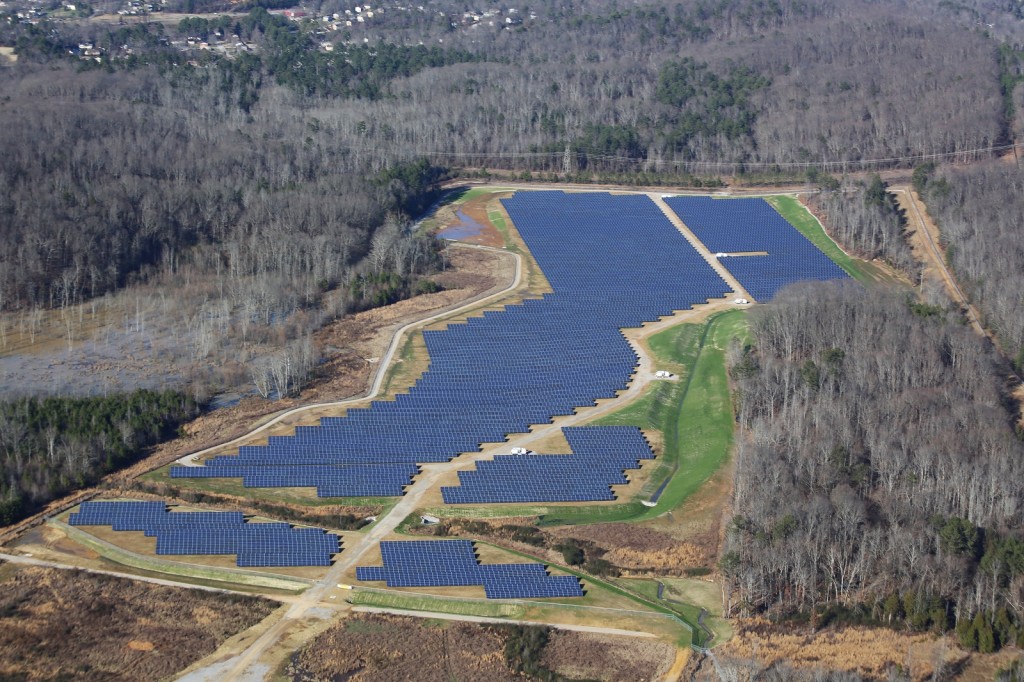One campaign pledge the Trump administration hasn’t been able to keep, as of yet, is the revival of the U.S. coal industry.
U.S. coal power plants shut down at their second-fastest rate ever in 2019, according to new data from Thomson Reuters and the federal government, as reported by Reuters Monday.
During 2019, 15.1 gigawatts of coal-fired electricity generation capacity was retired. That’s the amount to power about 15 million U.S. homes—or keep a great many electric vehicles charged year-round.

Photovoltaic solar power field at Volkswagen plant in Chattanooga, Tennessee
The sources replacing this, generally speaking, are great news for those plugging in and aiming to reduce their carbon footprint and their environmental effects. The Energy Information Administration (EIA) projects that in 2020, new capacity will come from wind (44%), solar (32%), and natural gas (22%). It predicts another 5.77 GW, or 51 percent of the anticipated retirements.
Reuters projects that at the current pace, more coal plants will have retired during the Trump administration than during the second Obama term.
According to the EIA, 2018 was the fifth consecutive year of lower coal consumption, which remains at the lowest level since 1975.

Coal, by Flicker user oatsy40 (Used Under CC License)
Coal accounts for about one-quarter of all energy-related carbon emissions, according to the Union of Concerned Scientists, or about 30 percent of U.S. electricity. Coal air emissions include more than sulfur dioxide and particulates; it tends to have heavy metals, mercury, and lead, which can lead to additional public-health issues. The ash and the mining also affect groundwater and waterways, and of course the people who mine and handle it.
Earlier this month, the EIA reported one other bright spot. Back in April 2019 two trendlines crossed: The total monthly generation from renewables surpassed the total monthly generation from coal, for the first time. It’s simple economics; in most cases, renewables now cost less than keeping coal running.
It’s proof positive that when you buy or lease a plug-in vehicle, it’s almost certainly getting greener by the year.
